Top 10 Edible Wild Plants You Can Safely Forage in North America
Learn to safely identify the top 10 edible wild plants in North America. This beginner-friendly guide covers common wild foods, foraging safety tips, and where to find them.
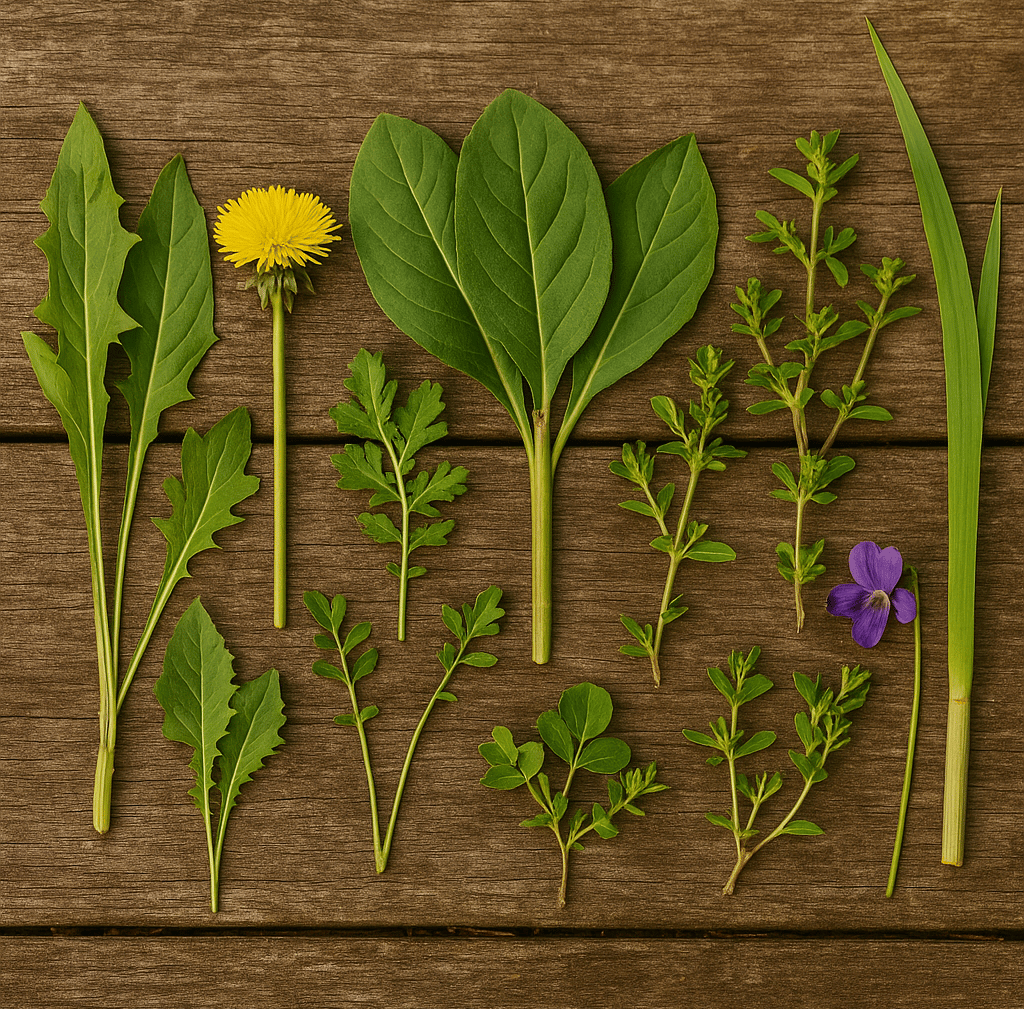

Top 10 Edible Wild Plants You Can Safely Forage in North America
Foraging wild edible plants can be a game changer when you're out in the wilderness. Whether you're in a survival scenario or just enjoying a long hike, being able to identify safe wild food gives you more than nourishment — it gives you confidence.
This guide breaks down 10 of the most useful and recognizable edible wild plants in North America, especially for beginners.
Why Knowing Edible Wild Plants Matters
In survival situations, food usually comes after shelter and water in terms of urgency. But it still plays a key role. Hunger affects your focus, energy, and morale. Having a few edible plants in your mental toolkit gives you access to calories, nutrients, and even hydration, in some cases. It also adds a valuable layer of self-reliance.
Dandelion (Taraxacum officinale)
Dandelions are one of the most widespread wild edibles in North America. You can eat the entire plant — roots, leaves, stems, and flowers. Young leaves are less bitter and can be eaten raw in salads or cooked. The roots can be roasted and used like coffee or boiled into tea.
If you're unsure how to identify this or similar plants, check out this guide on how to forage safely and responsibly to build confidence before harvesting.
Cattail (Typha species)
If you're near a pond or marsh, look for cattails. The white inner shoots taste like cucumber, and the flower spikes and roots are also edible. They're often called “the supermarket of the swamp” because of how many edible parts they offer.
Wild Onion and Wild Garlic (Allium species)
These are easy to identify by their strong onion or garlic smell. You’ll find them in open woods and fields. The bulbs and greens are edible and flavorful. Just be sure the scent is strong — poisonous lookalikes won’t smell like onions or garlic.
Misidentification can be risky, especially with plants that resemble edibles. This article on how to identify poisonous plants covers what to watch out for.
Wood Sorrel (Oxalis species)
Often mistaken for clover, wood sorrel has heart-shaped leaves and a tart, lemony flavor. It’s safe to eat in small amounts and grows in shady areas across North America. The leaves and flowers are edible and refreshing.
Lamb’s Quarters (Chenopodium album)
This fast growing weed is sometimes called wild spinach. It’s found in gardens, disturbed soils, and trailsides. The leaves have a light coating of white powder and are packed with nutrients. You can eat them raw or cooked just like spinach.
Chickweed (Stellaria media)
Chickweed grows low to the ground and is common in spring and fall. It has tiny white flowers and mild-tasting leaves that are great in salads. It's a soft, cool weather plant that thrives in shaded areas and is easy to recognize.
Purslane (Portulaca oleracea)
Purslane has thick, succulent leaves and red stems. It’s slightly tart, crunchy, and full of omega-3 fatty acids. You’ll find it in sunny areas like garden beds or sidewalks. It’s delicious raw or lightly sautéed.
Plantain (Plantago major and Plantago lanceolata)
Not to be confused with the fruit, this trail-side plant has ribbed leaves and is often used medicinally. The young leaves are edible and tender when cooked. It also makes a handy poultice for bug bites or cuts.
For more on how to use plantain and other natural remedies, explore foraging for medicinal plants in the wild.
Acorns (Quercus species)
Oak trees drop edible acorns in the fall. They need to be leached in water to remove tannins, but after that, they’re a rich, starchy food. You can roast them, grind them into flour, or boil them into mush.
Wild Berries (Various species)
Wild blackberries, raspberries, blueberries, and elderberries are common across North America. Be sure you can confidently identify each — many edible berries grow in clusters and have thorny stems or distinct foliage.
If you’re just starting out, here’s a breakdown of which wild berries are safe to eat, and which to avoid.
Final Thoughts on Foraging Safety
Always be 100% sure before you eat any wild plant. Many toxic species look similar to safe ones, so use multiple identifiers and take your time. A small field guide or foraging app can be a huge help. And if you're ever unsure: don't eat it.
Learning these plants gives you more than just food in a pinch — it connects you to the land and boosts your wilderness confidence. The more you practice, the better you’ll get at spotting, identifying, and using what nature provides.
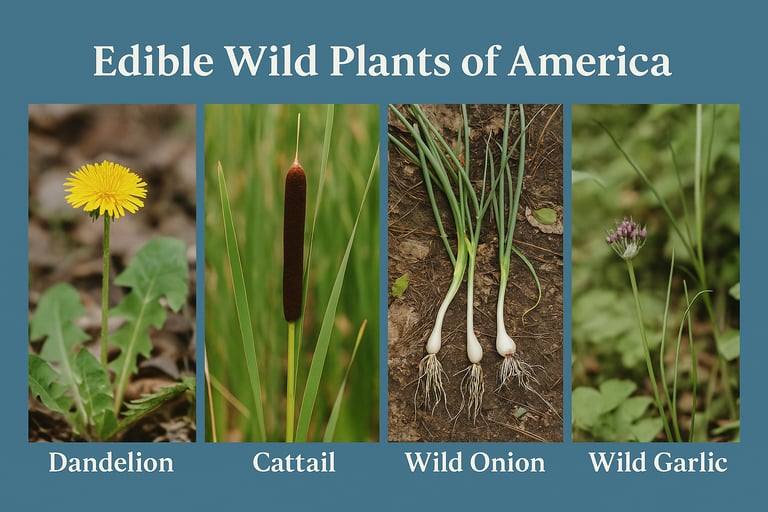

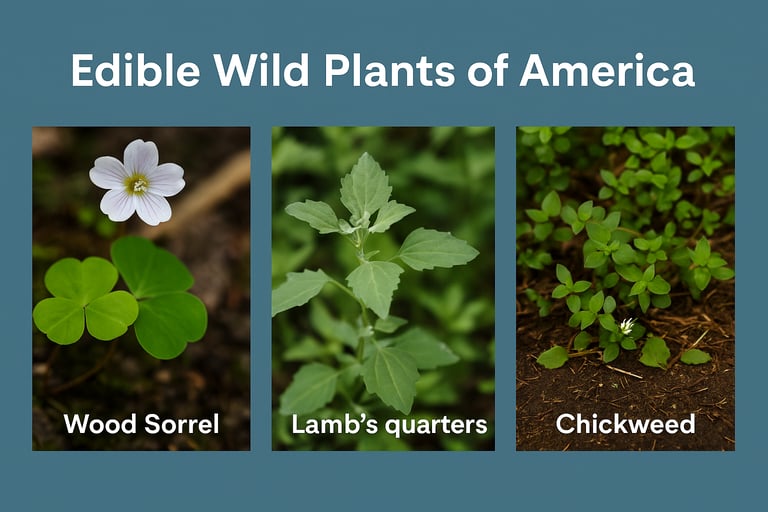

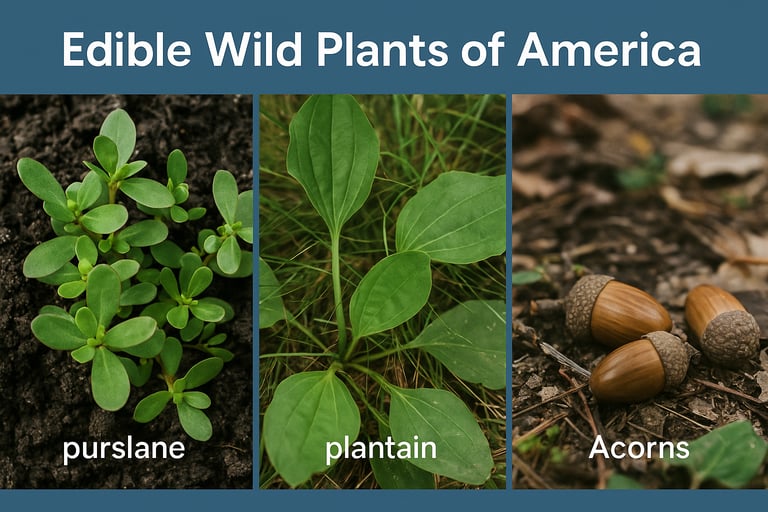

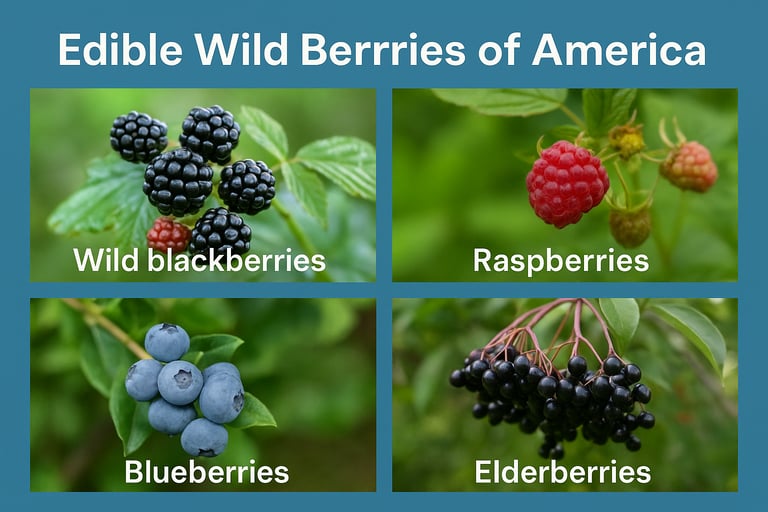

© 2025. All rights reserved About | Privacy Policy | Terms and Conditions | Affiliate Disclosure | Disclaimer


